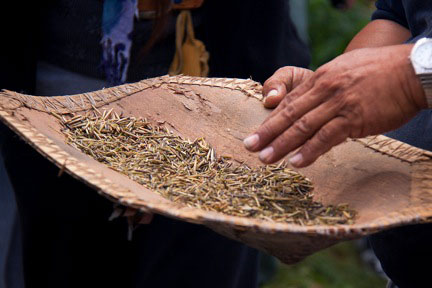Lac Vieux Desert Wild Rice

Lac Vieux Desert Wild Rice

PROJECT SNAPSHOT
Project Type
Non-Bank ProjectLocation
Michigan | Gogebic CountySolution
Natural Resource RestorationEcological Setting
Riparian SystemsRES partnered with the Lac Vieux Desert Band of Lake Superior Chippewa to identify and restore wild rice communities and potential new habitat in a 600-square-mile area of Michigan’s Upper Peninsula.
Funded with a GLRI grant through the Michigan Stewardship Network, our goal was to increase the number and acreage of wild rice stands on the tribe’s traditional lands to enhance watershed quality, wildlife habitat, ecosystem health, and the tribal community values.
RES collected aerial photos and sensor data to identify existing rice beds and locate suitable shallow-water wild rice habitat for restoration. Ecologists and geospatial staff also joined tribal members in actively restoring wild rice stands via traditional harvesting and planting.
In the fall, of 2010, RES collected high-resolution, multi-spectral aerial imagery and data, along with oblique-angle digital photos that, combined with ground-truthing and software “training,” enabled us to analyze the spectral signatures of the vegetation.
Informed with data and images, RES geospatial and ecological staff identified and mapped specific restoration sites and made recommendations for restoration that contribute to tribal, national, regional, and local goals in the Great Lakes Basin.
